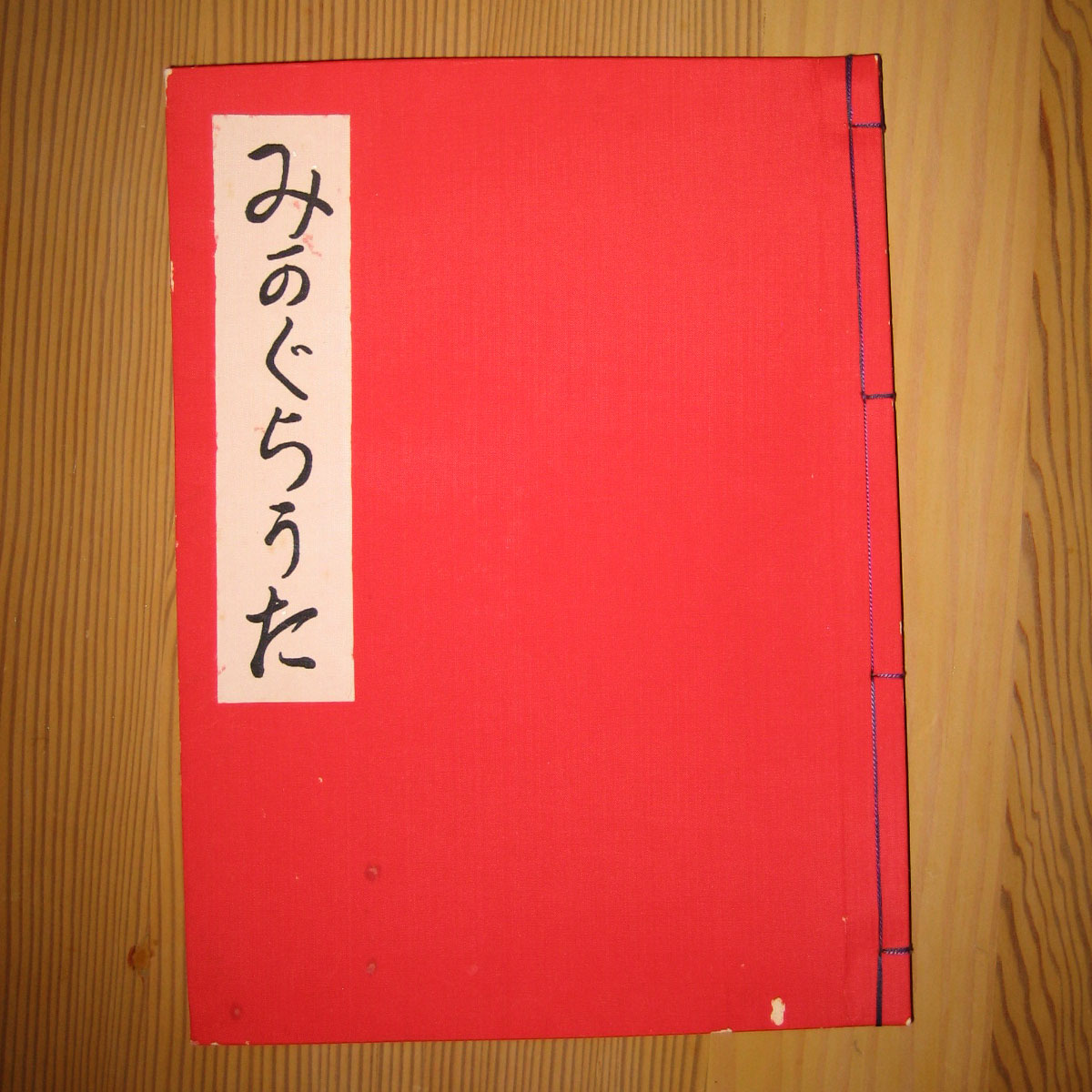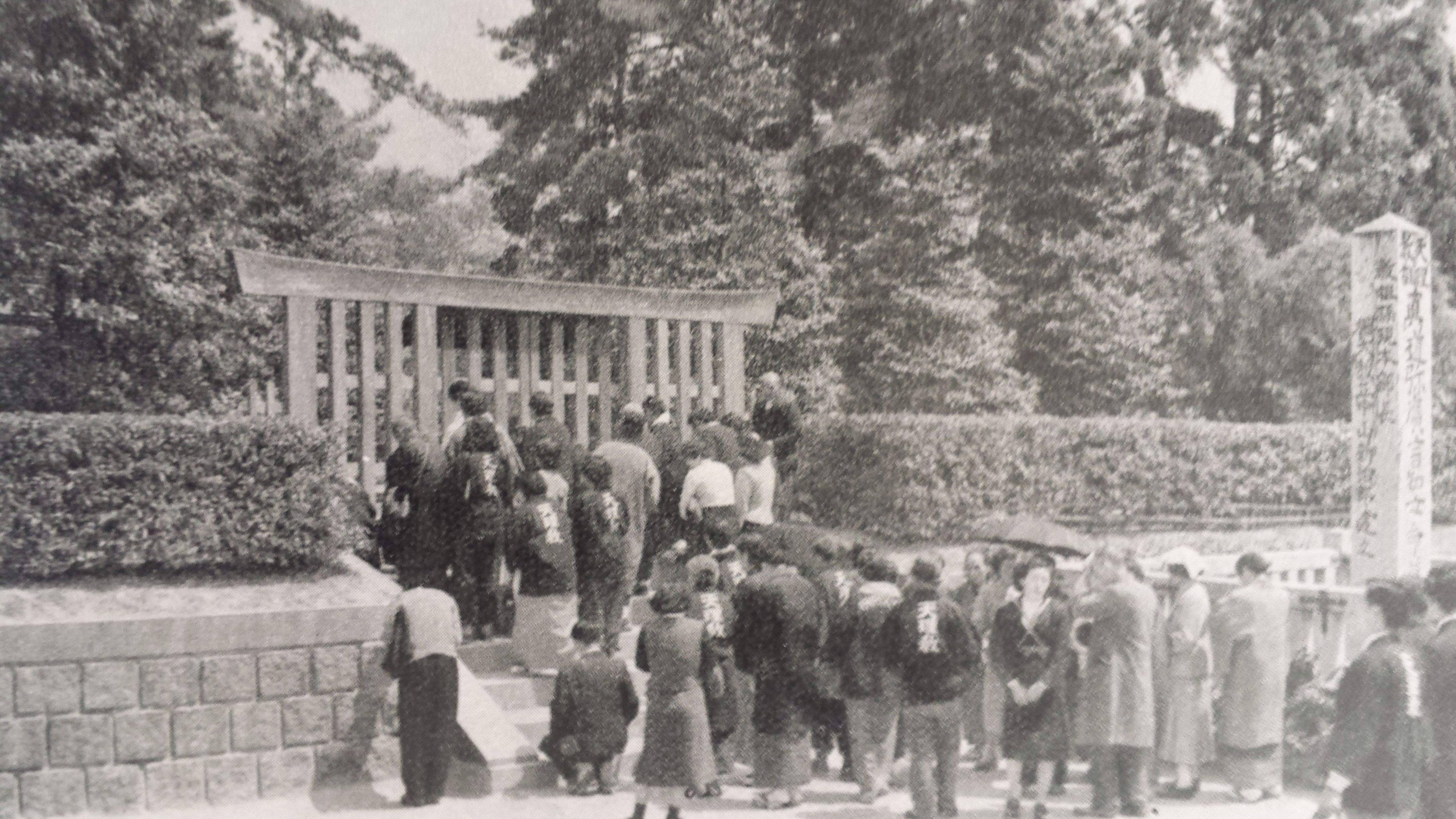|
Tenri-O-no-Mikoto
In Tenrikyo, God is a single divine being and creator of the entire universe. The first two characters in the Japanese kanji for Tenri-O-no-Mikoto are 天理, where 天 refers to heaven or divinity, and 理 refers to reason or knowledge, thus "Tenri" (天理) refers to divine or heavenly knowledge, and in a sense adds a divine nature to truth itself whereas "天理" also means "natural law" or its pseudonym, "divine law." The English name most frequently used to refer to Tenri-Ō-no-Mikoto outside of ritual is "God the Parent"; in Japanese, the equivalent common name is ''Oyagamisama''. In Tenrikyo, God has no gender. Tenrikyo followers vary in their understanding of this creator, from the early understanding of spirit (''kami'', god/deity) through the underlying natural causality (''Tsukihi'', moon-sun) and eventually to an understanding of a parental relationship between the creator and themselves (''oya'', parent). This progression of understanding is a key teaching of Tenrikyo ... [...More Info...] [...Related Items...] OR: [Wikipedia] [Google] [Baidu] |
Service (Tenrikyo)
In the Tenrikyo religion, the Service (おつとめ ''Otsutome'') is the most important prayer ritual, along with the Sazuke. The Service comes in fundamental forms (i.e. the Kagura Service and Teodori) and several variant forms (such as the Morning and Evening Service). The text to the Service is the ''Mikagura-uta,'' one of the three scriptures of Tenrikyo. Kagura Service The most important Service is the Kagura Service (''Kagura zutome''). This service is the masked dance that is performed around the Kanrodai where Tenrikyo Church Headquarters – located in Tenri City, Japan – is situated. Hashimoto cites three meanings behind the performance of the Kagura Service–to represent God's creative power at the time of human conception and thus inspire humankind to live the Joyous Life, to reconfirm humankind's relationship with God and the universe, and to realize the importance of living by God's original intention for humankind. Performance The Kagura Service is performed ... [...More Info...] [...Related Items...] OR: [Wikipedia] [Google] [Baidu] |
Tenrikyo
is a Japanese new religion which is neither strictly monotheistic nor pantheistic, originating from the teachings of a 19th-century woman named Nakayama Miki, known to her followers as "Oyasama". Followers of Tenrikyo believe that God of Origin, God in Truth, known by several names including "Tsukihi," "Tenri-Ō-no-Mikoto" and "Oyagamisama (God the Parent)" revealed divine intent through Miki Nakayama as the Shrine of God and to a lesser extent the roles of the Honseki Izo Iburi and other leaders. Tenrikyo's worldly aim is to teach and promote the Joyous Life, which is cultivated through acts of charity and mindfulness called . The primary operations of Tenrikyo today are located at Tenrikyo Church Headquarters (Tenri, Nara, Japan), which supports 16,833 locally managed churches in Japan,Japanese Ministry of Education. ''Shuukyou Nenkan, Heisei 14-nen'' (宗教年鑑平成14年). 2002. the construction and maintenance of the and various community-focused organisations. It has ... [...More Info...] [...Related Items...] OR: [Wikipedia] [Google] [Baidu] |
Mikagura-uta
The Mikagura-uta (みかぐらうた, ''The Songs for the Service'') is one of the three Tenrikyo scriptures, along with the ''Ofudesaki'' and the ''Osashizu''. It was composed by the foundress of Tenrikyo, Miki Nakayama, from 1866 to 1875, and revised to its current version in 1882. The Mikagura-uta is the liturgical book of the Service (''otsutome''), a religious ritual that has a central place in Tenrikyo. During the Service, the text to the ''Mikagura-uta'' is sung together with dance movements and musical accompaniment. Etymology and meaning "Mikagura-uta" can be subdivided into three sections. ''Mi'' is an honorific prefix. The word ''kagura'' is a generic term for any performance for a deity or deities in Japan. Although ''kagura'' are usually associated with Shinto shrines, there is also historical evidence of their association with Shugendō and Buddhist schools such as Shingon. The word ''uta'' simply means "song" or "songs." It is unknown when “Mikagura-uta” becam ... [...More Info...] [...Related Items...] OR: [Wikipedia] [Google] [Baidu] |
Sazuke
The Sazuke (おさづけ ''Osazuke'') refers to a prayer in which a Tenrikyo follower asks for divine intervention to heal an ailment. Etymology In the original Japanese, the term is preceded by an honorific prefix and is written in hiragana: おさづけ. The kanji most commonly associated with the term is 授, meaning "give, grant; impart, teach" and "be granted/taught." The follower who administers the Sazuke to the suffering person acts as a mediator through which ''Tenri-O-no-Mikoto'' grants the blessing of a cure.「さずけ」 "Sazuke," 『改訂天理教辞典』 ''Kaitei Tenrikyo jiten'', p. 369. English equivalent: ''A Glossary of Tenrikyo Terms'', pp. 362–365. Bestowal In her lifetime, Nakayama Miki bestowed the Sazuke to her most devout followers. After she passed in 1887, Izo Iburi bestowed the Sazuke in her place. Initially, followers who distinguished themselves during Nakayama's physical lifetime would receive the Sazuke spontaneously as a divine directio ... [...More Info...] [...Related Items...] OR: [Wikipedia] [Google] [Baidu] |
Nakayama Miki
was a nineteenth-century Japanese farmer and religious leader. She is the primary figure of the Japanese new religion Tenrikyo. Followers, who refer to her as Oyasama (おやさま), believe that she was settled as the Shrine of Tsukihi from the moment she experienced a divine revelation in 1838 until her death in 1887. Upon her divine revelation, she gave away most of her family's possessions and dismantled the family's house, thereby entering a state of poverty. She began to attract followers, who believed that she was a living goddess who could heal people and bless expectant mothers with safe childbirth. To leave a record of her teachings, she composed the ''Ofudesaki'' and taught the lyrics, choreography and music of the Service, which have become Tenrikyo's scripture and liturgy respectively. She identified what she claimed to be the place where God created human beings and instructed her followers to mark the place with a pillar and perform the liturgy around it, whic ... [...More Info...] [...Related Items...] OR: [Wikipedia] [Google] [Baidu] |
Kami
are the deities, divinities, spirits, phenomena or "holy powers", that are venerated in the Shinto religion. They can be elements of the landscape, forces of nature, or beings and the qualities that these beings express; they can also be the spirits of venerated dead people. Many ''kami'' are considered the ancient ancestors of entire clans (some ancestors became ''kami'' upon their death if they were able to embody the values and virtues of ''kami'' in life). Traditionally, great leaders like the Emperor could be or became ''kami''. In Shinto, ''kami'' are not separate from nature, but are of nature, possessing positive and negative, and good and evil characteristics. They are manifestations of , the interconnecting energy of the universe, and are considered exemplary of what humanity should strive towards. ''Kami'' are believed to be "hidden" from this world, and inhabit a complementary existence that mirrors our own: . To be in harmony with the awe-inspiring aspects of nature ... [...More Info...] [...Related Items...] OR: [Wikipedia] [Google] [Baidu] |
Creator Deity
A creator deity or creator god (often called the Creator) is a deity responsible for the creation of the Earth, world, and universe in human religion and mythology. In monotheism, the single God is often also the creator. A number of monolatristic traditions separate a secondary creator from a primary transcendent being, identified as a primary creator.(2004) Sacred Books of the Hindus Volume 22 Part 2: Pt. 2, p. 67, R.B. Vidyarnava, Rai Bahadur Srisa Chandra Vidyarnava Monotheism Atenism Initiated by Pharaoh Akhenaten and Queen Nefertiti around 1330 BCE, during the New Kingdom period in ancient Egyptian history. They built an entirely new capital city ( Akhetaten) for themselves and worshippers of their sole creator god on a wilderness. His father used to worship Aten alongside other gods of their polytheistic religion. Aten, for a long time before his father's time, was revered as a god among the many gods and goddesses in Egypt. Atenism faded away after the death of the ph ... [...More Info...] [...Related Items...] OR: [Wikipedia] [Google] [Baidu] |
Nyorai
The Japanese word is the translation of the Sanskrit and Pali word '' Tathagata'', the term the historical Buddha used most often to refer to himself. Among his Japanese honorifics, it is the one expressing the highest degree of respect. Although originally applied only to Buddha himself, with the advent of Mahayana Buddhism Tathāgata (and therefore ''Nyorai'') came to be used for all those who have achieved enlightenment, entities which occupy the highest of the four ranks of the Japanese Buddhist pantheon. Their rank is accordingly called the . Etymology The Buddhist honorific ''Nyorai'' is the Japanese translation of ''Tathāgata'', a Sanskrit and Pali compound word whose exact meaning is uncertain. It was widely used in Indian religions other than Brahmanism as a term of respect for religious figures of exceptional stature, but it ended up being used only by Buddhism. Sanskrit grammar offers two possibilities for breaking up the compound: either ''tathā'' (thus) and ''ā ... [...More Info...] [...Related Items...] OR: [Wikipedia] [Google] [Baidu] |
Osashizu
In the Tenrikyo religion, the Osashizu (Japanese: お指図) ("Divine Directions") is a written record of oral revelations given by Izo Iburi. It is one of the three scriptures (''sangenten'' 三原典) of Tenrikyo, along with the ''Ofudesaki'' ("The Tip of the Writing Brush") and the ''Mikagura-uta'' ("The Songs for the Service"). The full scripture is published in seven volumes (plus an index in three volumes) and contains around 20,000 "divine directions" delivered between January 4, 1887 and June 9, 1907. Etymology and meaning ''O'' is an honorific prefix, while ''sashizu'' may refer to “instruction(s)” or “direction(s).” In Tenrikyo parlance, the term ''Osashizu'' technically has two senses, a broader and a narrower one. In its broader sense, the Osashizu includes all of the oral revelations given by Miki Nakayama (who followers refer to as ''Oyasama'' or the "Foundress"), and Izo Iburi (who followers refer to as the ''Honseki,'' or the "Main Seat"). In its narrower ... [...More Info...] [...Related Items...] OR: [Wikipedia] [Google] [Baidu] |
Salvation
Salvation (from Latin: ''salvatio'', from ''salva'', 'safe, saved') is the state of being saved or protected from harm or a dire situation. In religion and theology, ''salvation'' generally refers to the deliverance of the soul from sin and its consequences."Salvation." ''Oxford English Dictionary'' (2nd ed.). Oxford University Press. 1989. "The saving of the soul; the deliverance from sin and its consequences." The academic study of salvation is called ''soteriology''. Meaning In Abrahamic religions and theology, ''salvation'' is the saving of the soul from sin and its consequences. It may also be called ''deliverance'' or ''redemption'' from sin and its effects. Depending on the religion or even denomination, salvation is considered to be caused either only by the grace of God (i.e. unmerited and unearned), or by faith, good deeds (works), or a combination thereof. Religions often emphasize that man is a sinner by nature and that the penalty of sin is death (physical death, ... [...More Info...] [...Related Items...] OR: [Wikipedia] [Google] [Baidu] |
Transcendence (religion)
In religion, transcendence is the aspect of a deity's nature and power that is completely independent of the material universe, beyond all known physical laws. This is contrasted with immanence, where a god is said to be fully present in the physical world and thus accessible to creatures in various ways. In religious experience, transcendence is a state of being that has overcome the limitations of physical existence, and by some definitions, has also become independent of it. This is typically manifested in prayer, rituals, meditation, psychedelics and paranormal "visions". It is affirmed in various religious traditions' concept of the divine, which contrasts with the notion of a god (or, the Absolute) that exists exclusively in the physical order (immanentism), or is indistinguishable from it (pantheism). Transcendence can be attributed to the divine not only in its being, but also in its knowledge. Thus, a god may transcend both the universe and knowledge (is beyond the ... [...More Info...] [...Related Items...] OR: [Wikipedia] [Google] [Baidu] |







